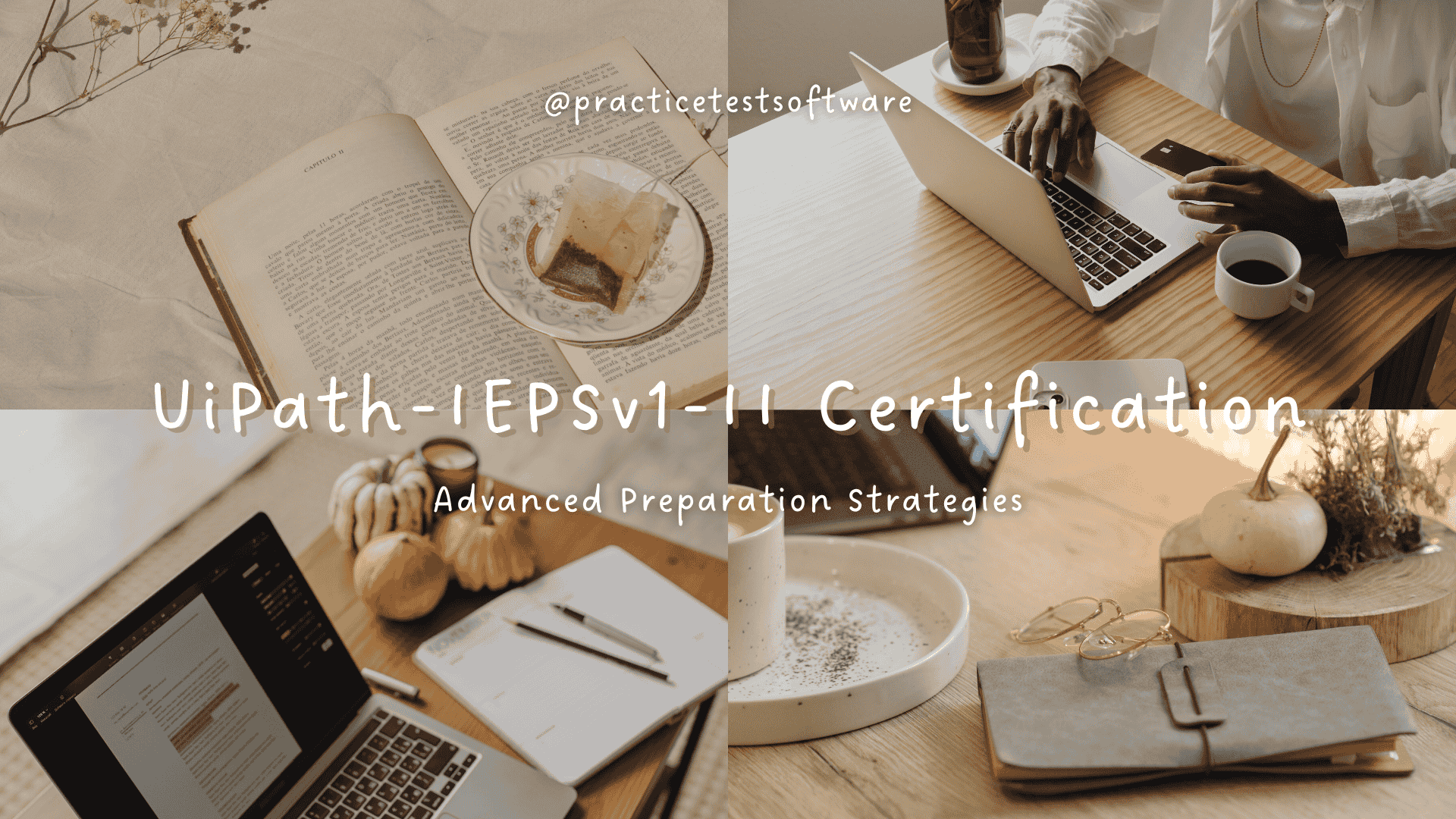The UiPath-IEPSv1-II certification is designed for professionals who already have a solid grasp of robotic process automation (RPA) fundamentals and want to demonstrate advanced expertise. Unlike entry-level certifications, this one goes deeper into complex automation scenarios, advanced workflow design, and enterprise-level implementation. If you’re preparing for this exam, you need more than just basic knowledge you need advanced strategies to stand out.
This guide explores the best approaches to ensure you’re fully prepared and confident on exam day.
Understanding the Nature of the Exam
The UiPath-IEPSv1-II exam evaluates not only technical skills but also your ability to think critically about automation solutions. You’ll encounter advanced questions related to UiPath Studio, Orchestrator, and broader RPA design practices. Expect scenarios where you’ll need to make decisions about scalability, error handling, and optimization.
The goal of the certification is to confirm that you can manage automation in a professional environment where projects are complex, business-critical, and often require collaboration between teams.
Strengthening Core Knowledge Before Going Deeper
Even though this is an advanced certification, revisiting the basics is essential. Sometimes, the toughest questions test your ability to apply simple concepts in complicated situations. Reviewing topics like selectors, variable management, and control flow ensures you don’t stumble over fundamentals while solving advanced problems.
Once the foundation is refreshed, move on to deeper areas such as advanced data manipulation, API integration, and orchestrating long-running workflows. These are often the difference-makers in passing the exam.
Building Advanced Hands-On Experience
Theory alone won’t prepare you for UiPath-IEPSv1-II. You need practice in building automation solutions that resemble enterprise-level challenges. Try to create projects where multiple processes interact with each other, involve exception handling, and require reusability.
For example, simulate a scenario where an automation retrieves data from different sources, processes it, and updates a database while handling exceptions gracefully. The more complex your practice projects, the better prepared you’ll be for the exam.
Designing With Best Practices in Mind
At the advanced level, it’s not enough to just “make it work.” UiPath emphasizes best practices, including clean architecture, reusable workflows, and effective logging. The exam may test your understanding of how to design solutions that are scalable and maintainable.
Think of it as moving from a developer mindset to an architect’s mindset. Instead of focusing on single processes, you’ll need to design solutions that fit into a broader automation strategy.
Leveraging Advanced Study Resources
The official UiPath Academy is still one of the best resources, but for this exam, you’ll need to go beyond standard training. Explore:
- Advanced developer courses within UiPath Academy.
- Community blogs and case studies that showcase real-world automation solutions.
- GitHub repositories and sample projects from UiPath professionals.
This exposure will broaden your thinking and help you see how different automation challenges are solved in practice.
Practicing With Mock Exams and Simulations
Advanced exams require advanced practice. Mock tests are valuable because they replicate the structure and pressure of the real exam. Instead of just checking answers, spend time analyzing why a particular choice is correct and how alternative solutions might fail.
You can also simulate exam conditions by timing yourself while solving practice questions. This helps build the discipline of managing your time effectively, ensuring you don’t get stuck on complex scenarios during the actual test.
Engaging With the UiPath Community at a Higher Level
At this stage, you should aim to contribute as much as you learn from the community. Participate in advanced discussions on the UiPath Forum, where experienced professionals share insights about automation architecture and troubleshooting. Answering questions from others forces you to think critically and reinforces your own knowledge.
Networking with certified experts also gives you access to tips and strategies that may not be available in official materials.
Managing Exam Day Readiness
The final stage of preparation is about fine-tuning your knowledge and keeping your mindset steady. Focus on reviewing advanced topics like orchestrating multiple bots, handling transactions with queues, and working with external integrations.
Just as important, take care of practical details get proper rest before the exam, avoid last-minute cramming, and maintain a calm, confident mindset. A well-rested brain processes information far better than one that is stressed or exhausted.
The UiPath-IEPSv1-II certification is a benchmark of advanced expertise in automation. Passing it requires more than basic study; it demands a combination of refreshed fundamentals, advanced hands-on practice, best practice design, and continuous learning from both official and community resources. By approaching preparation strategically, you can walk into the exam with confidence and leave with a credential that proves your mastery of RPA at an enterprise level.
Your certification journey doesn’t just prepare you for the exam it equips you to handle complex automation challenges in real-world environments. With the right strategies, you’re not just aiming to pass; you’re preparing to excel.

